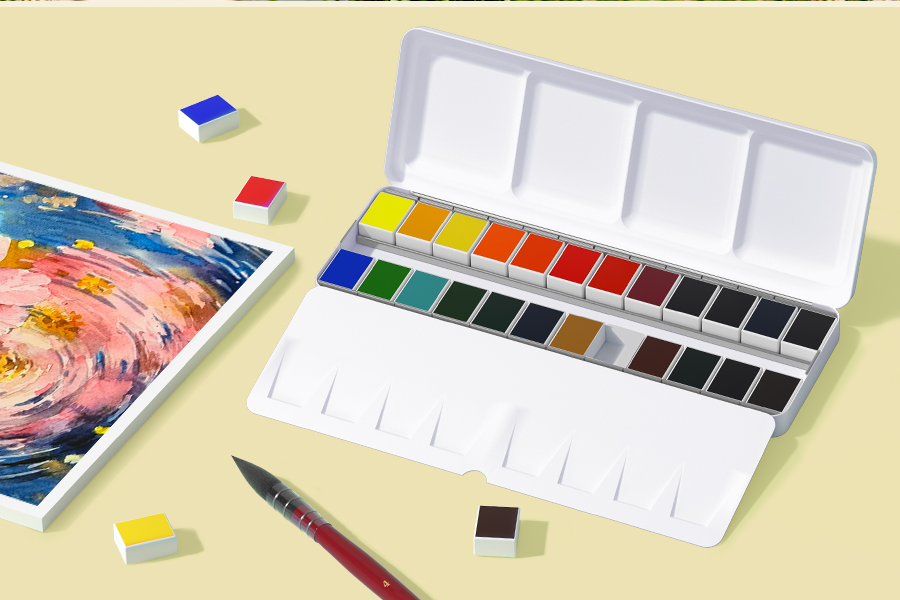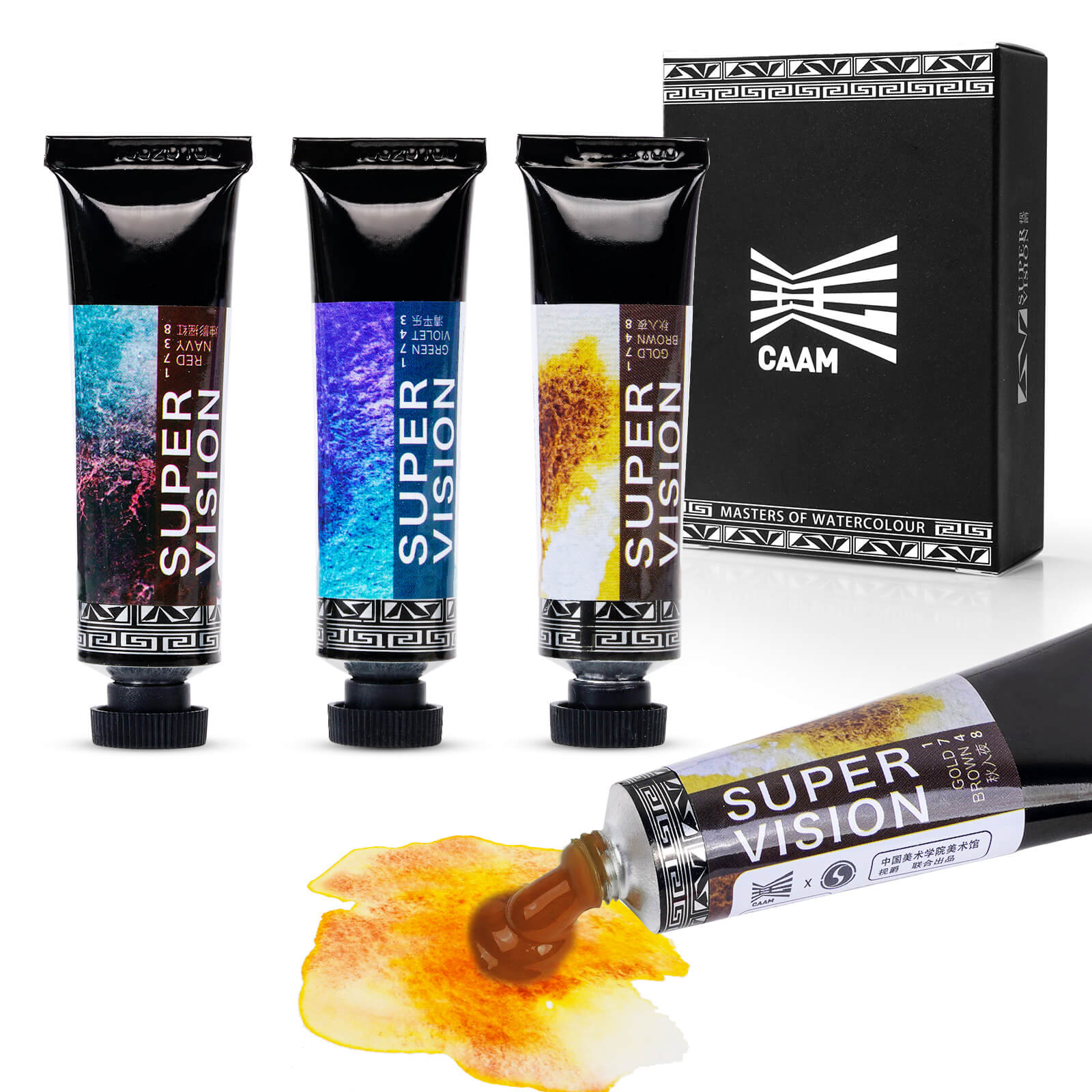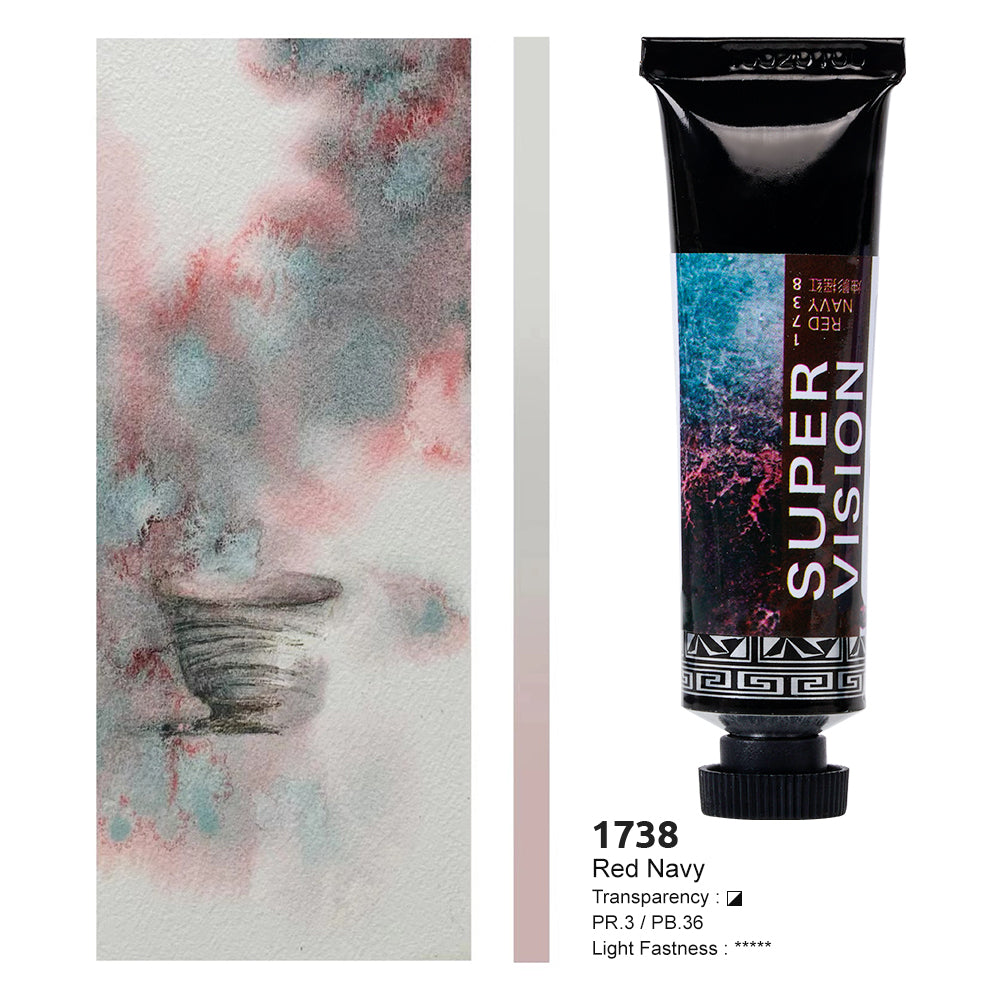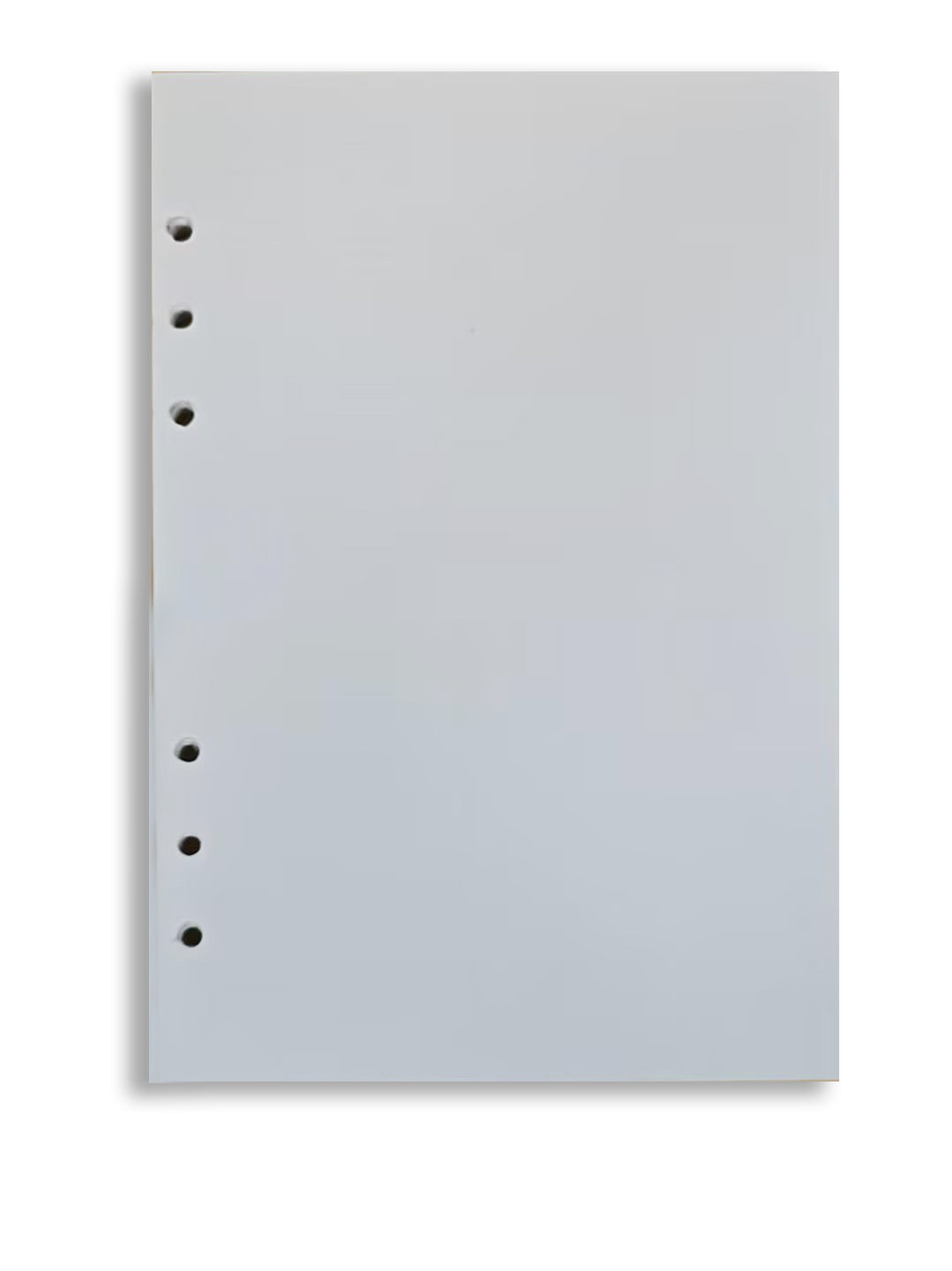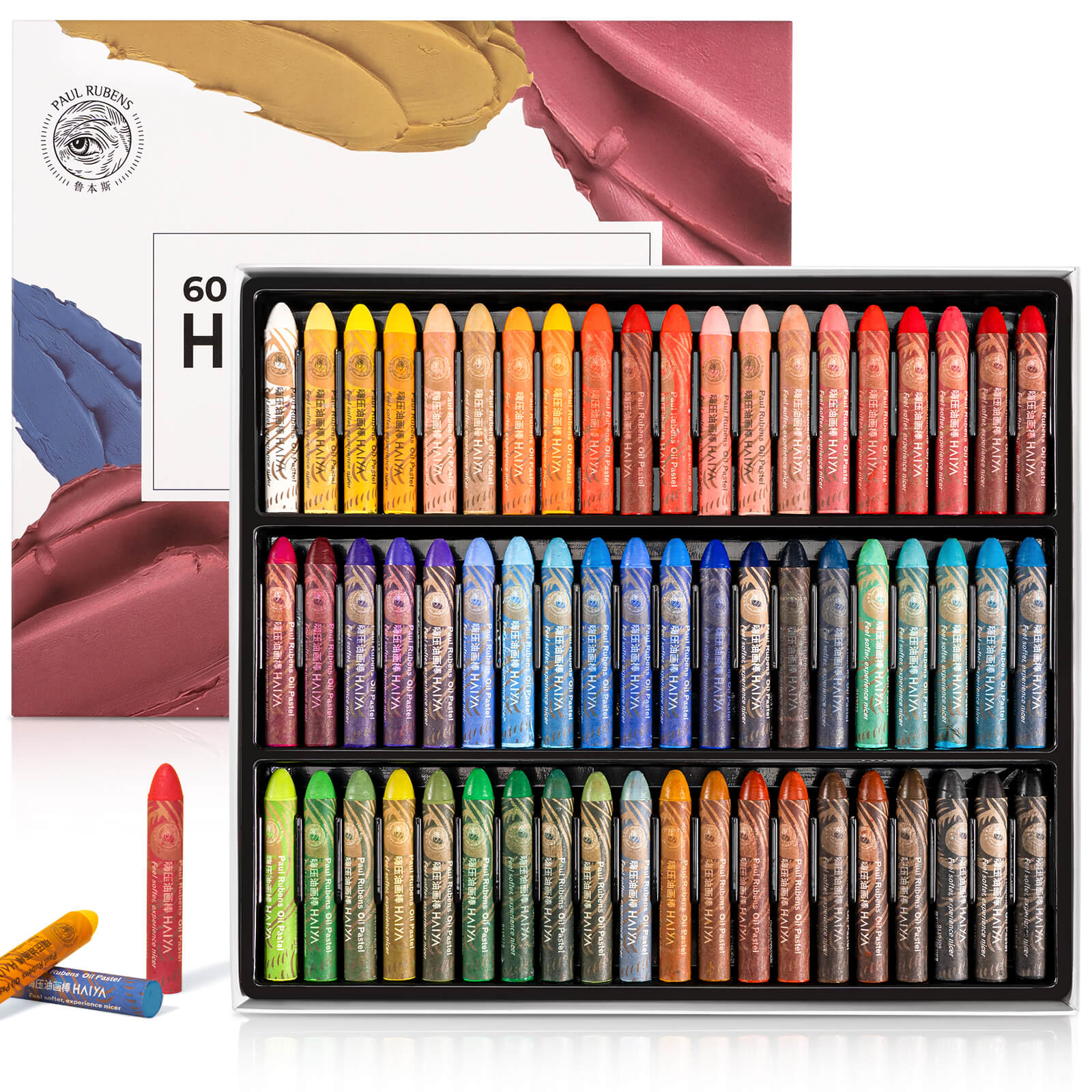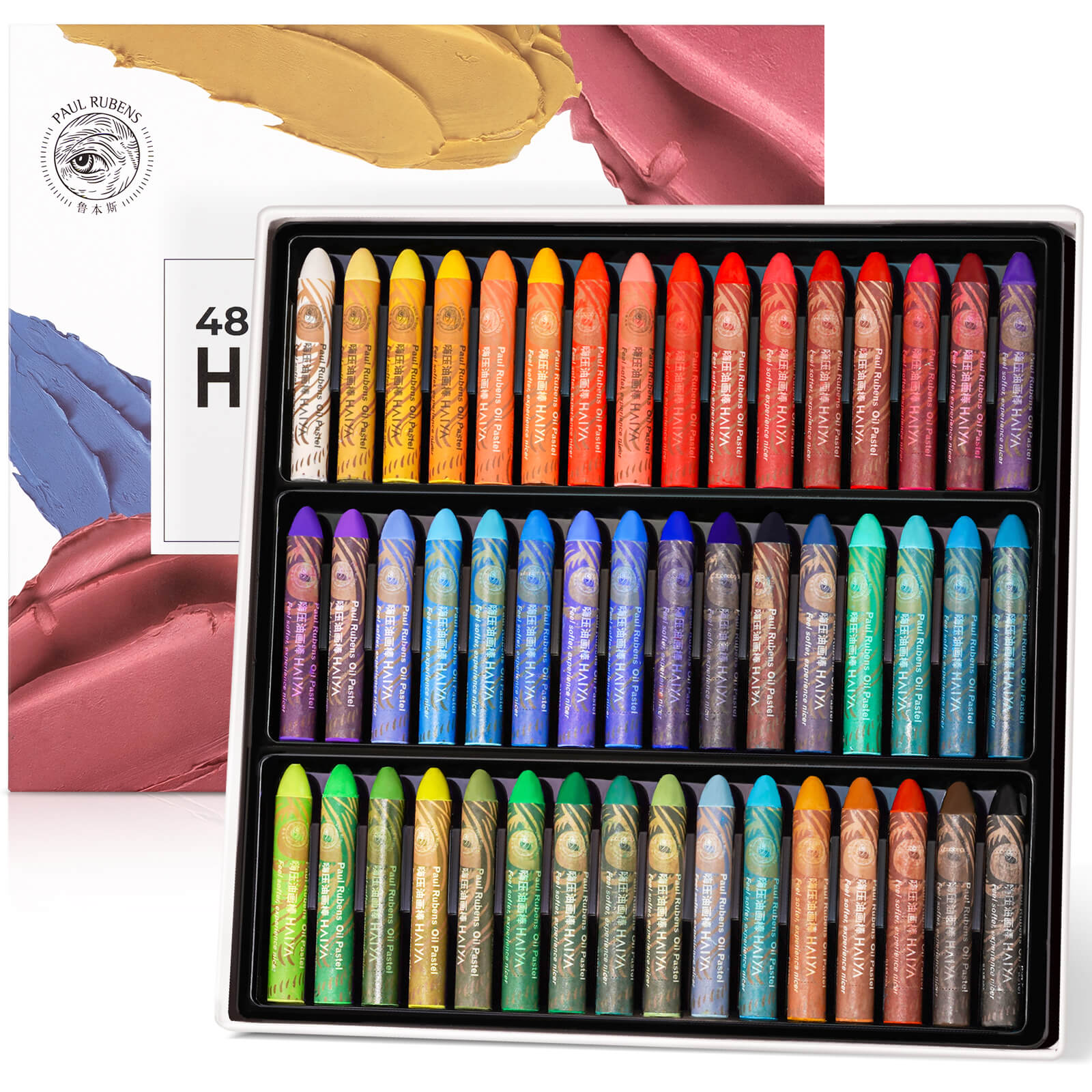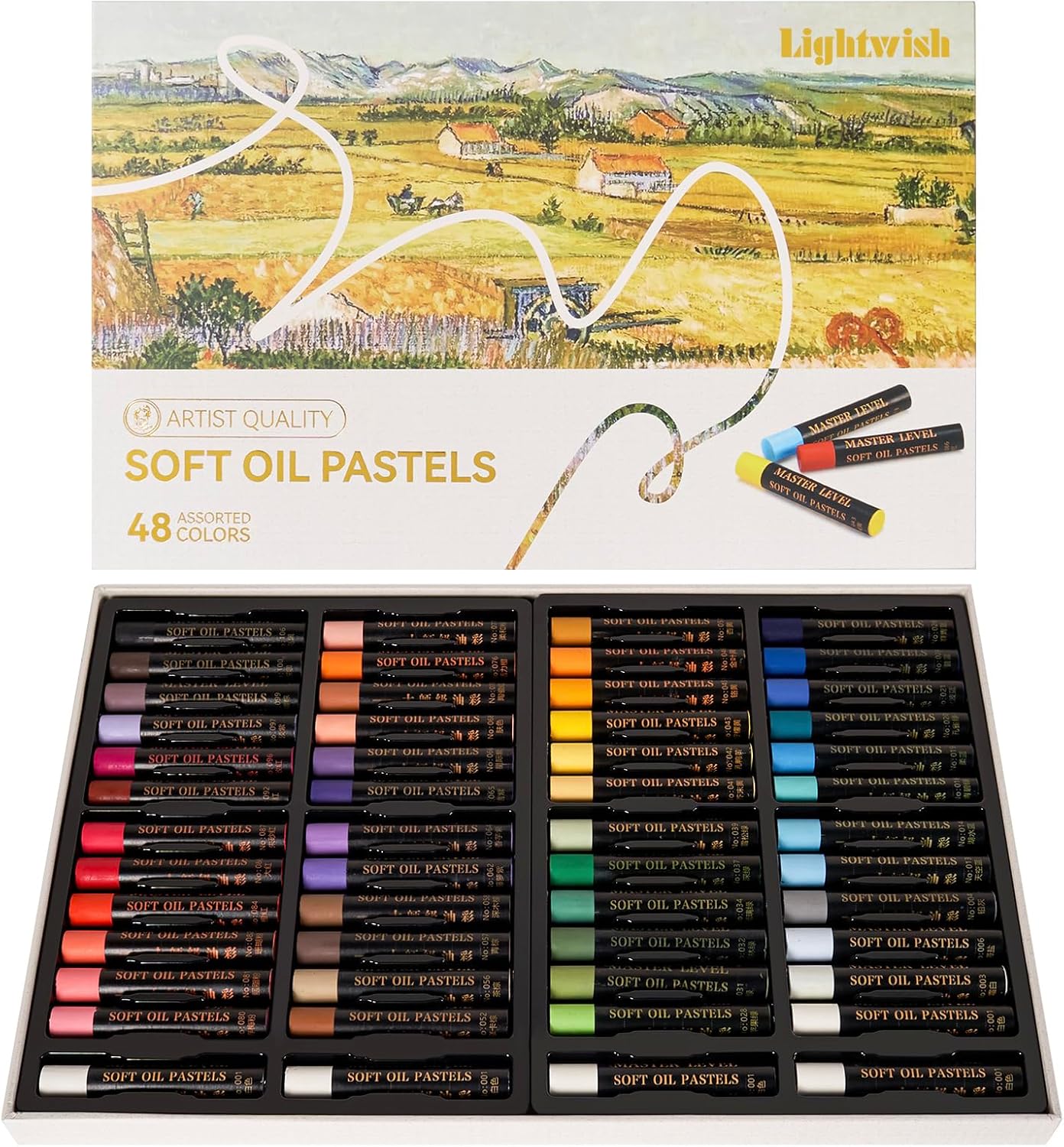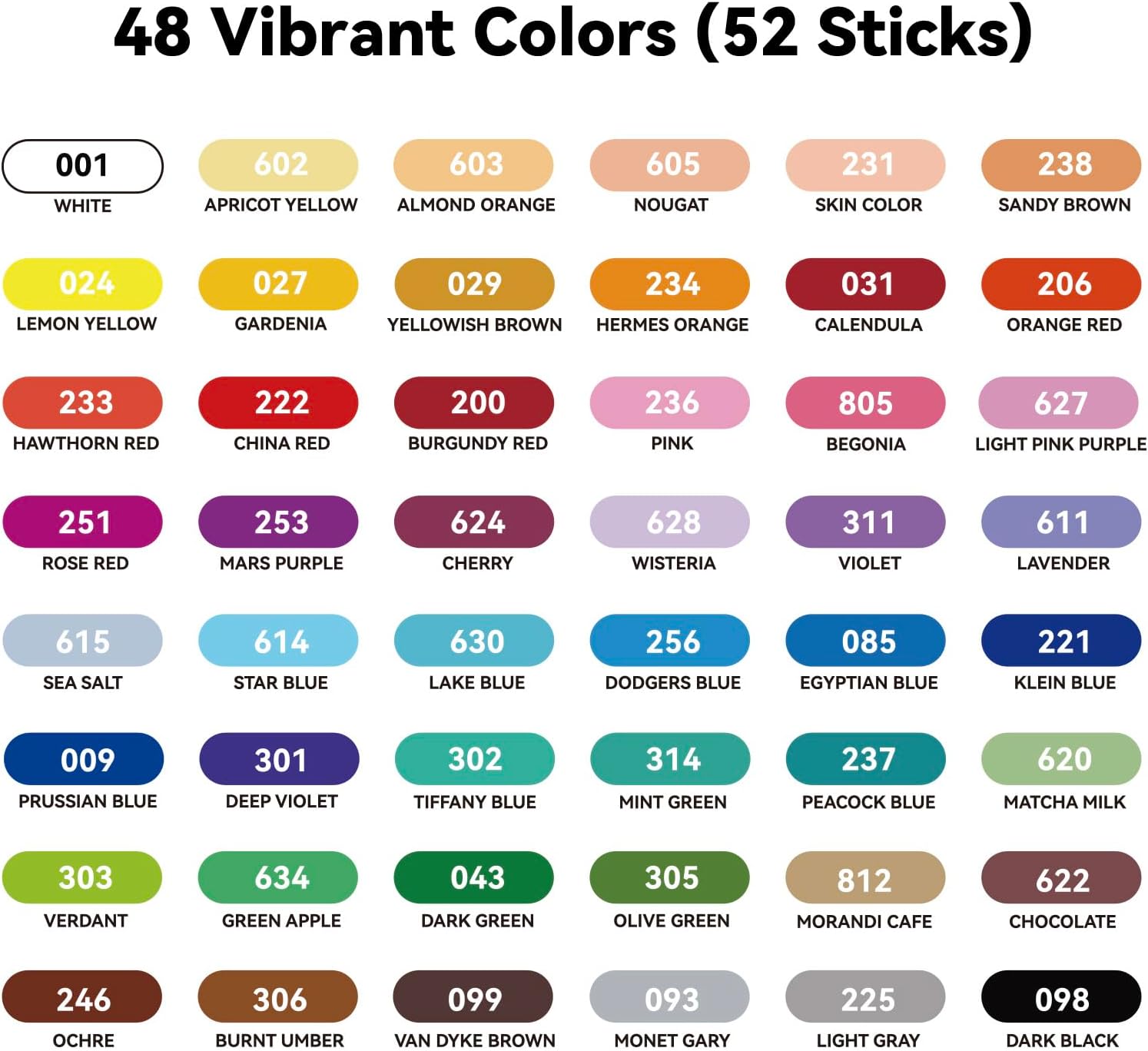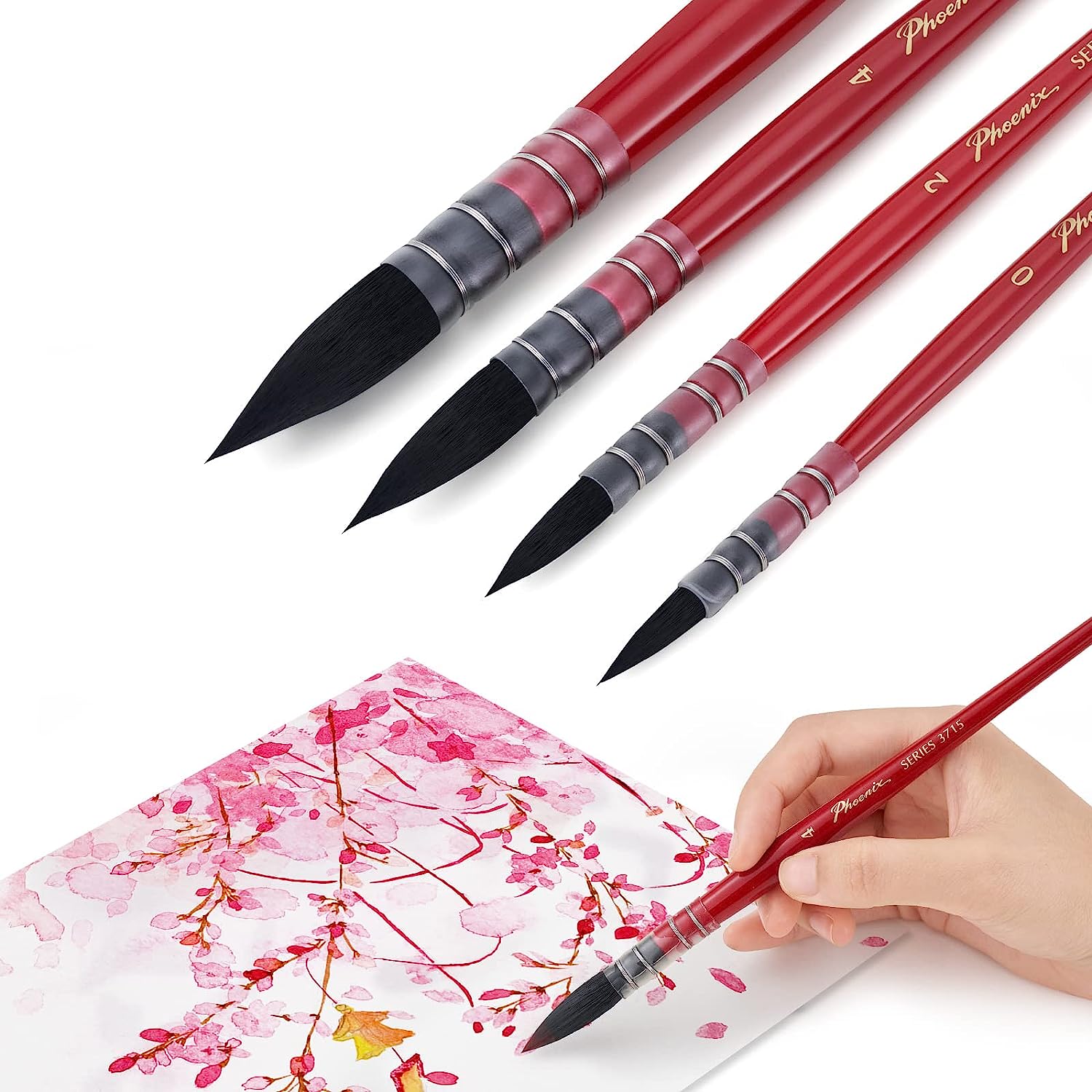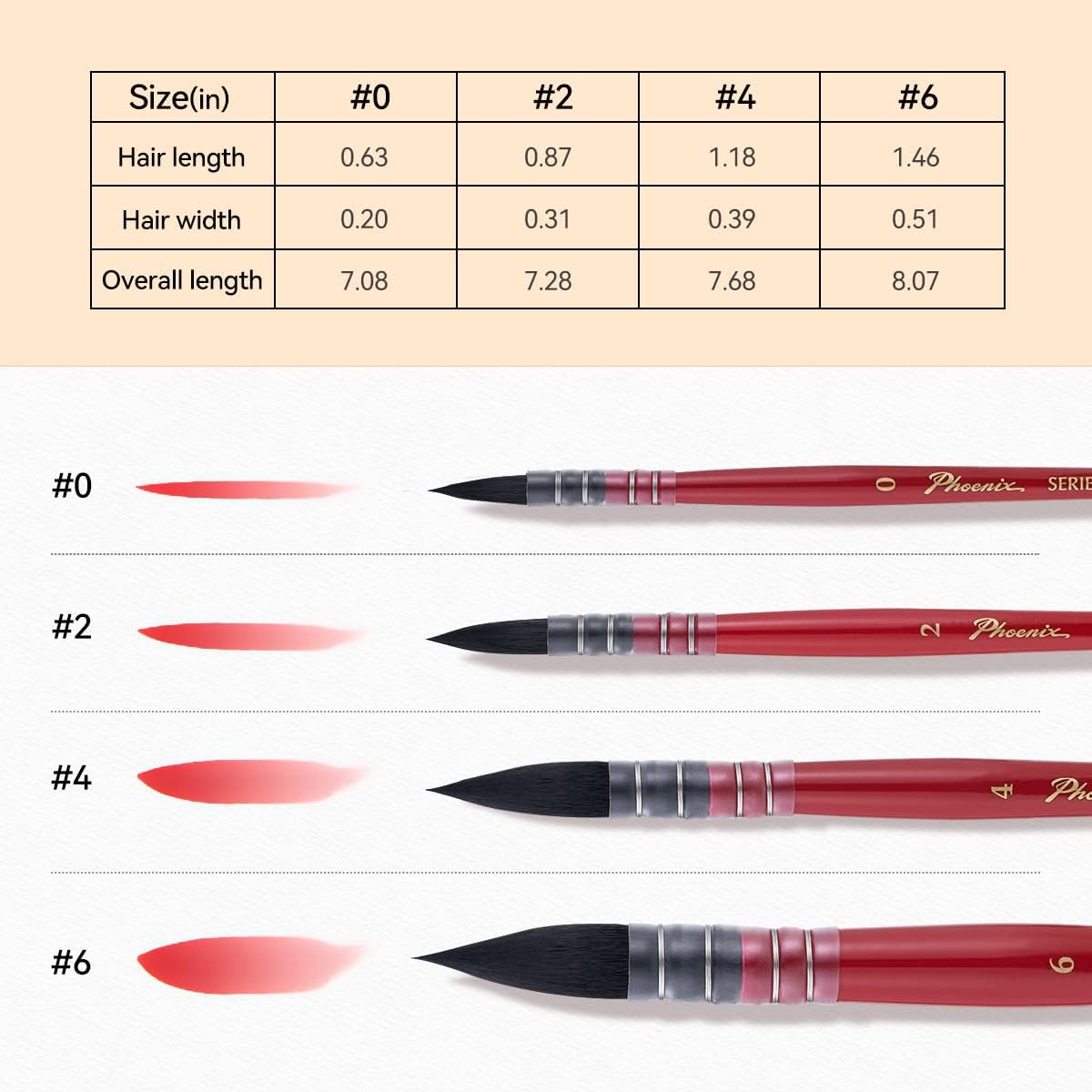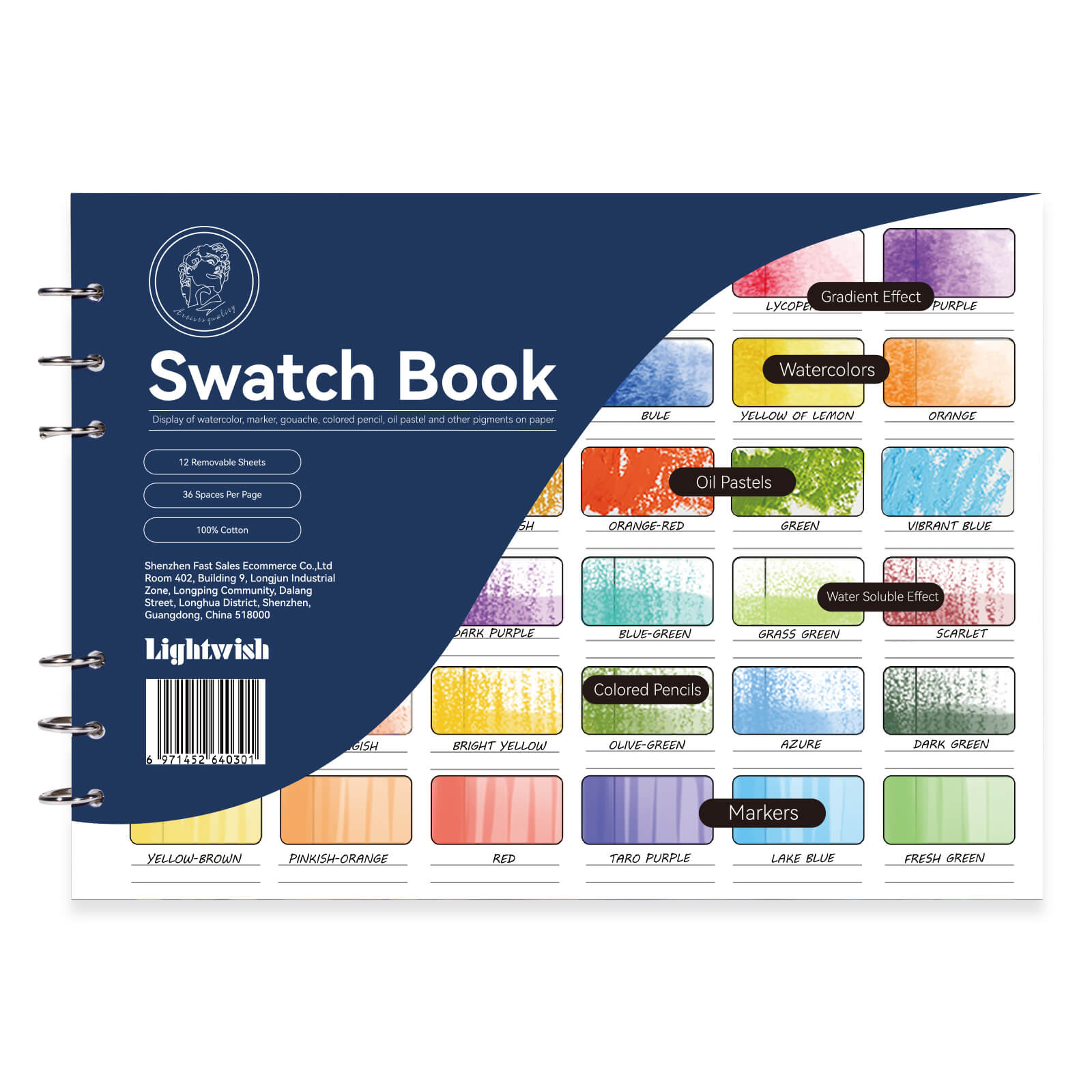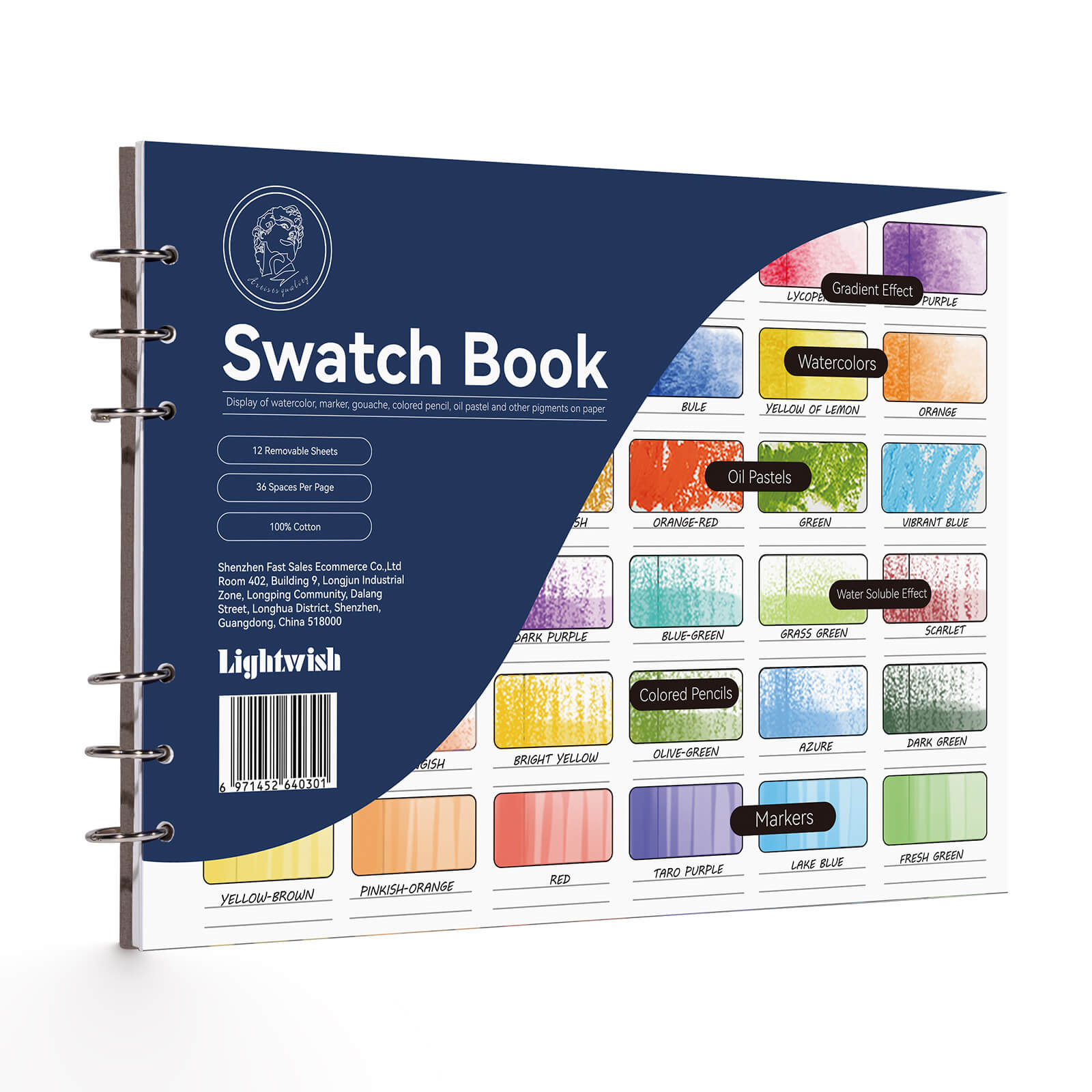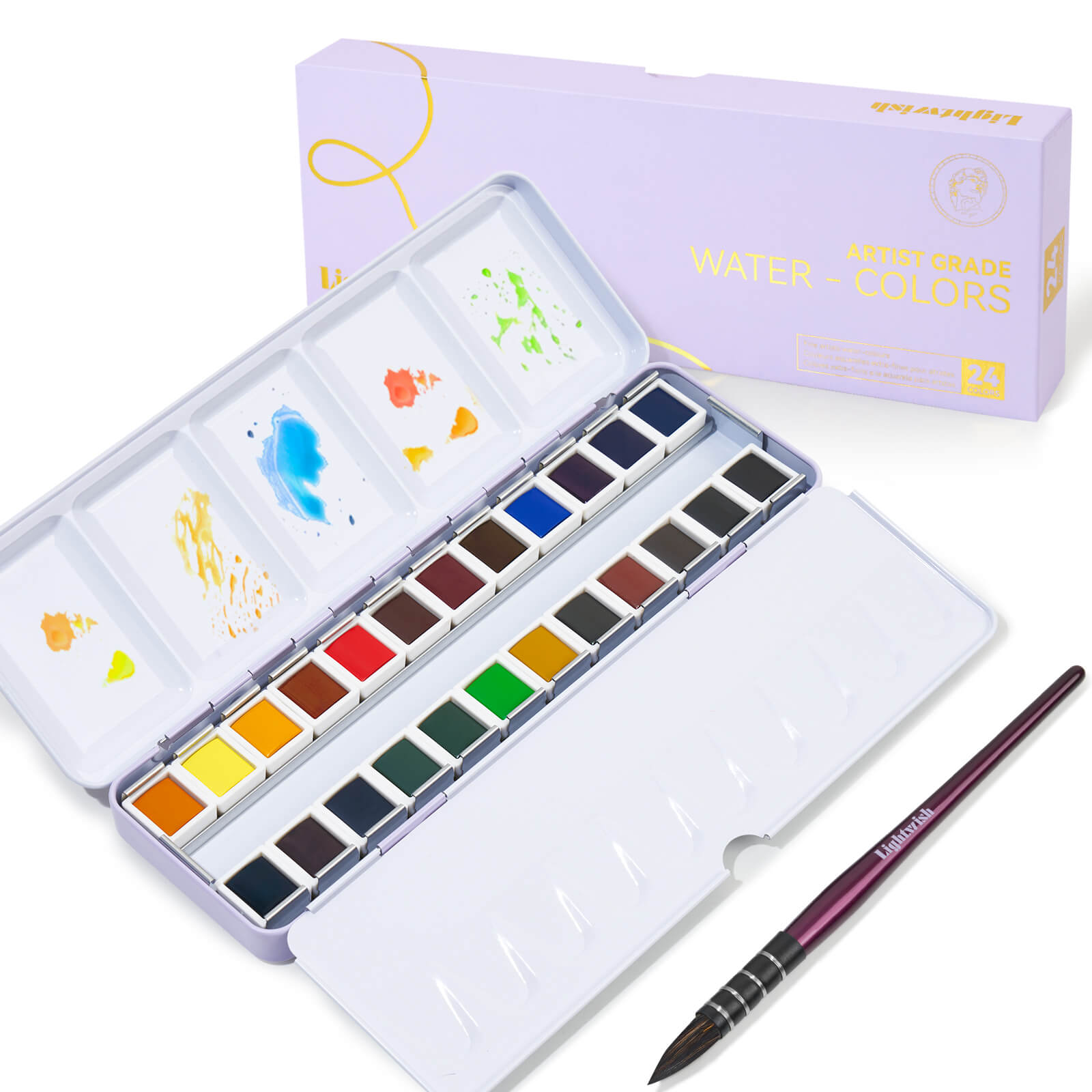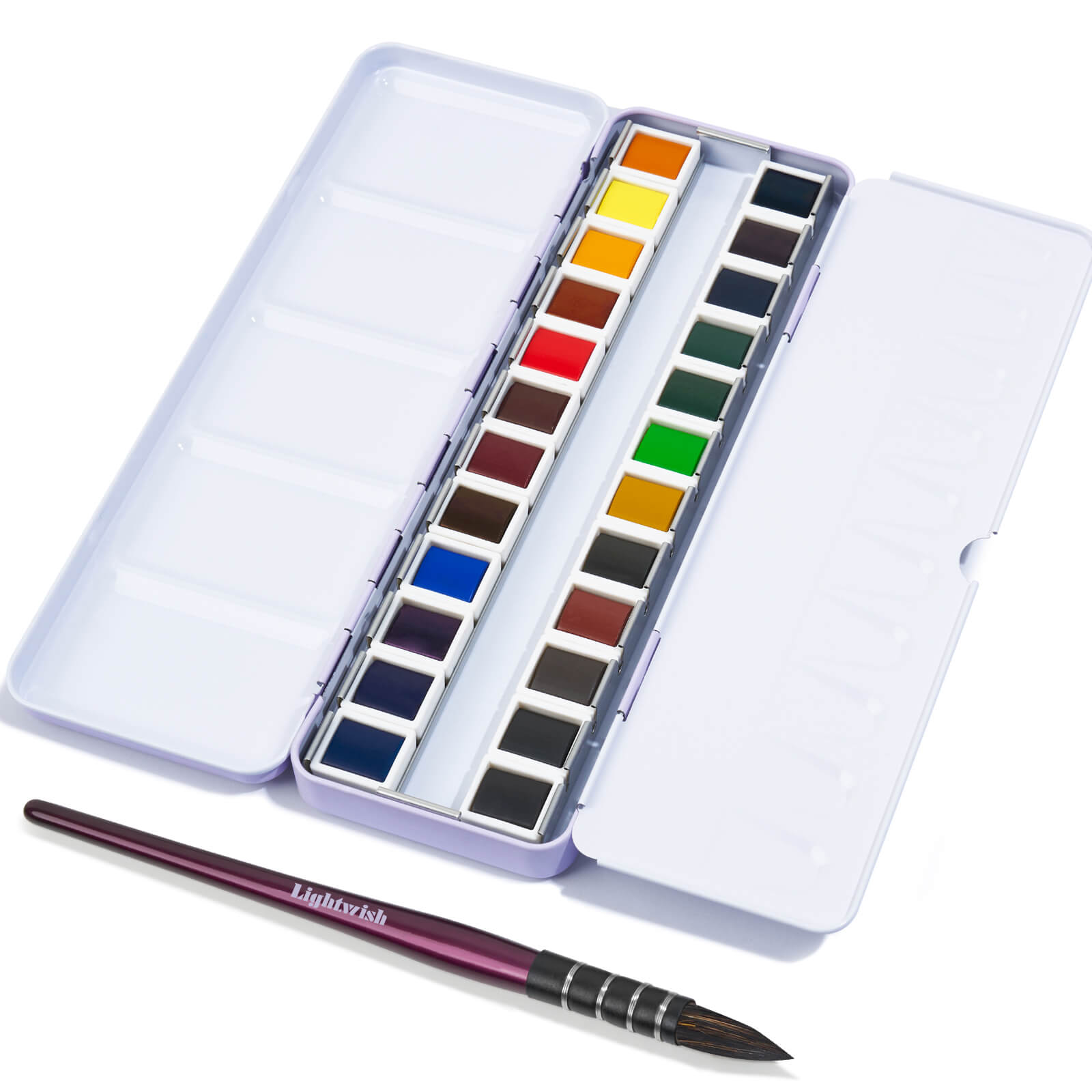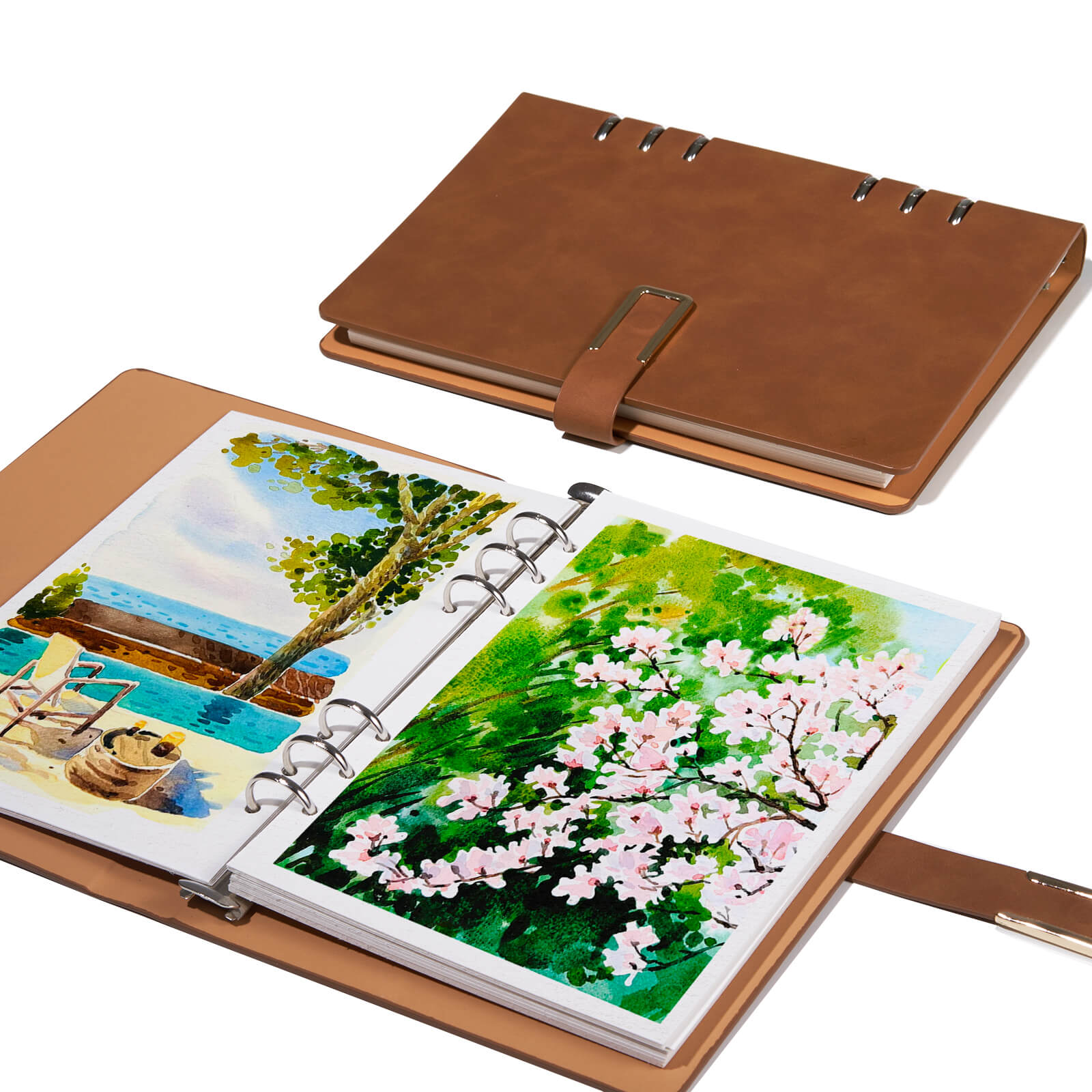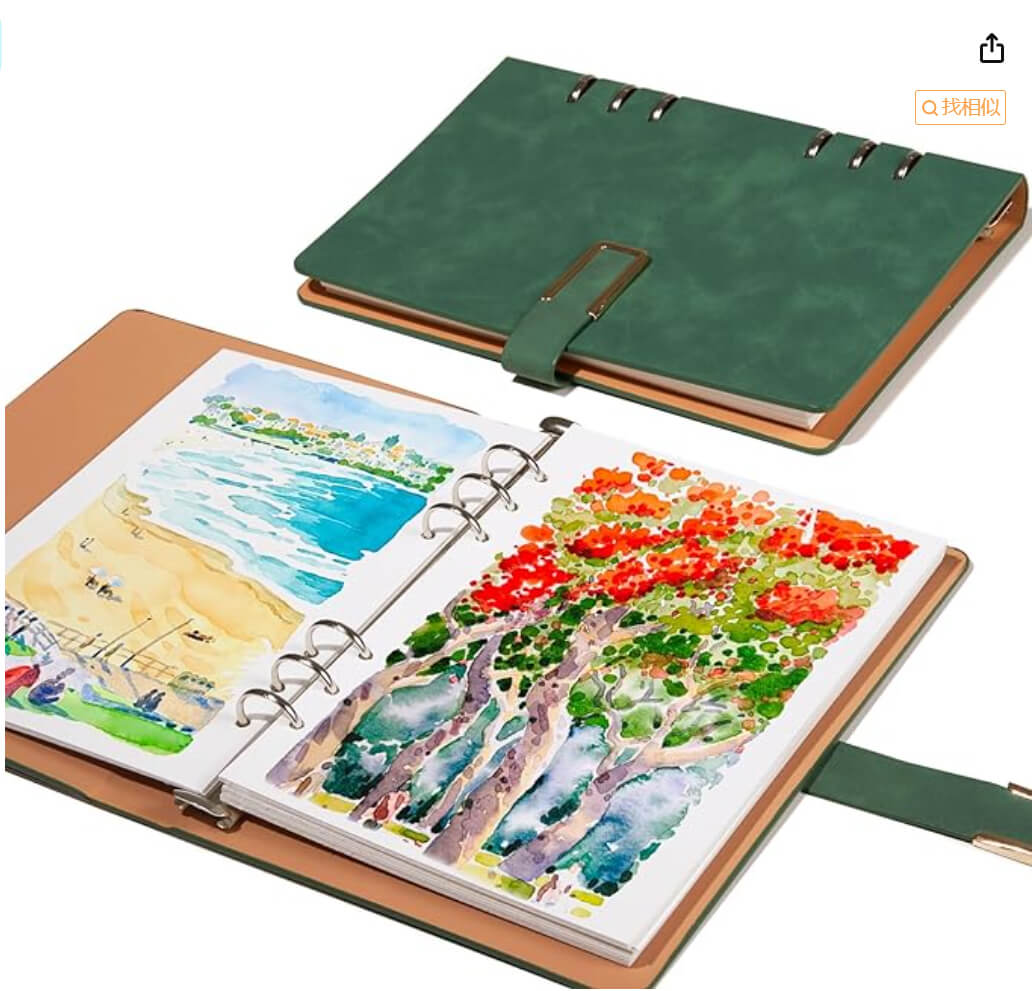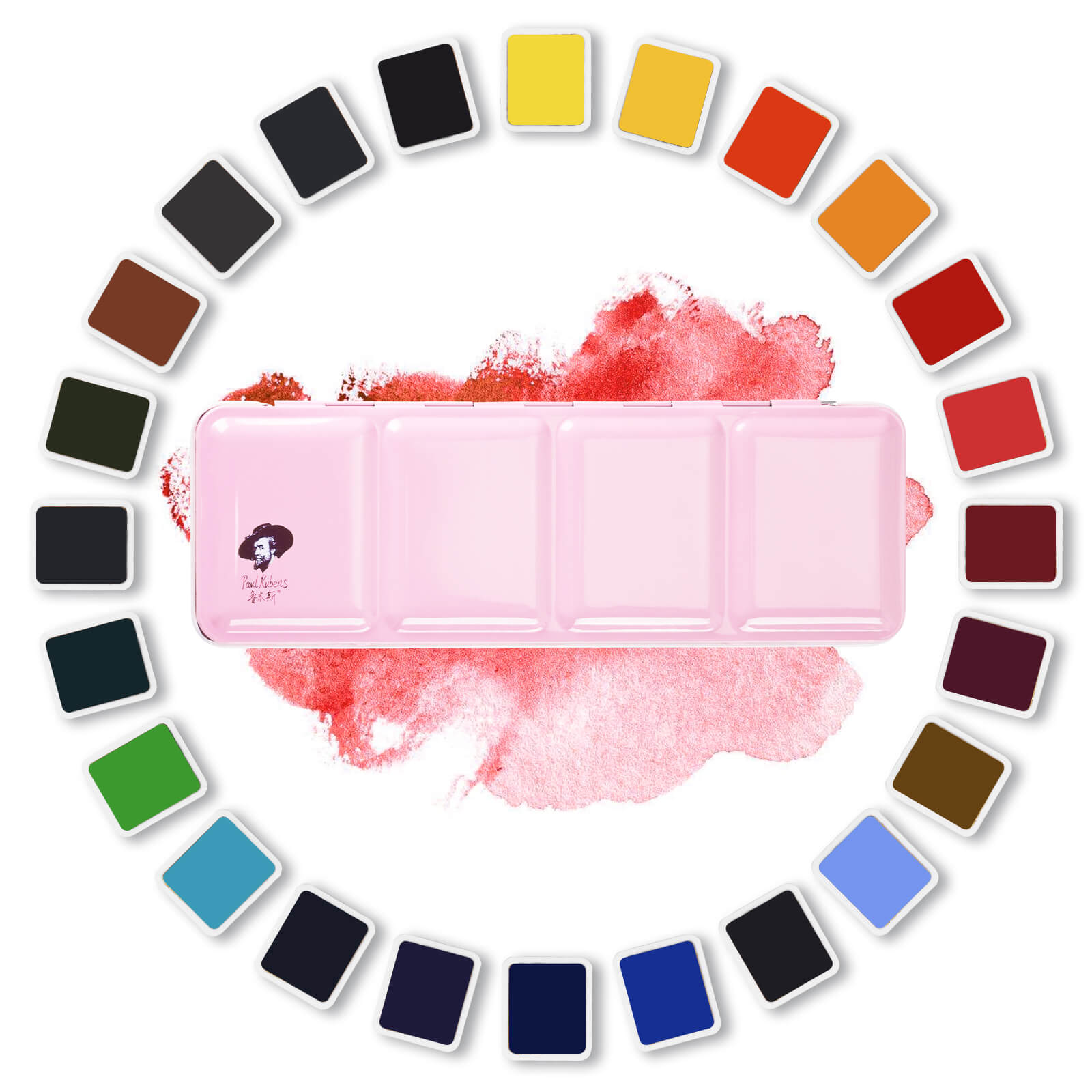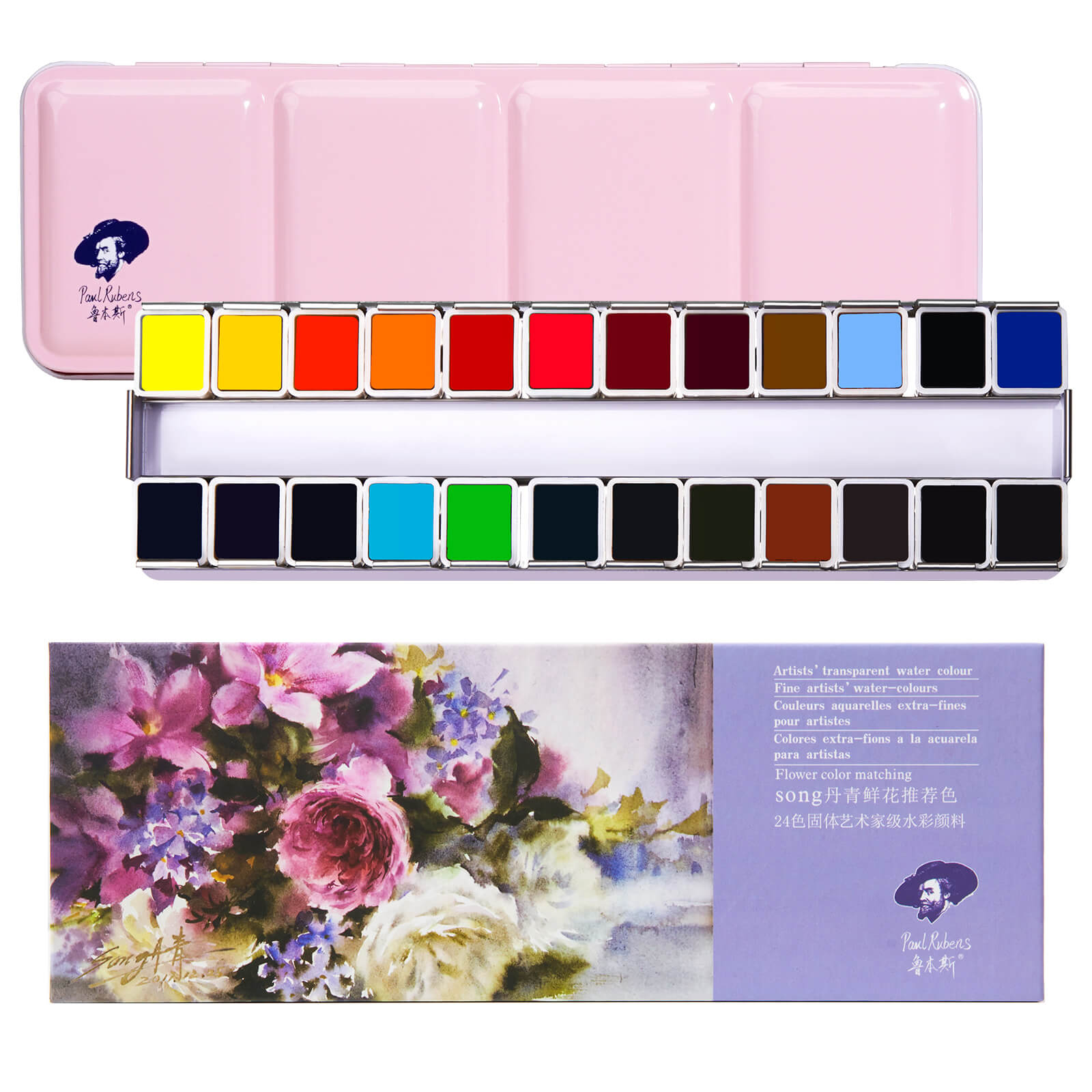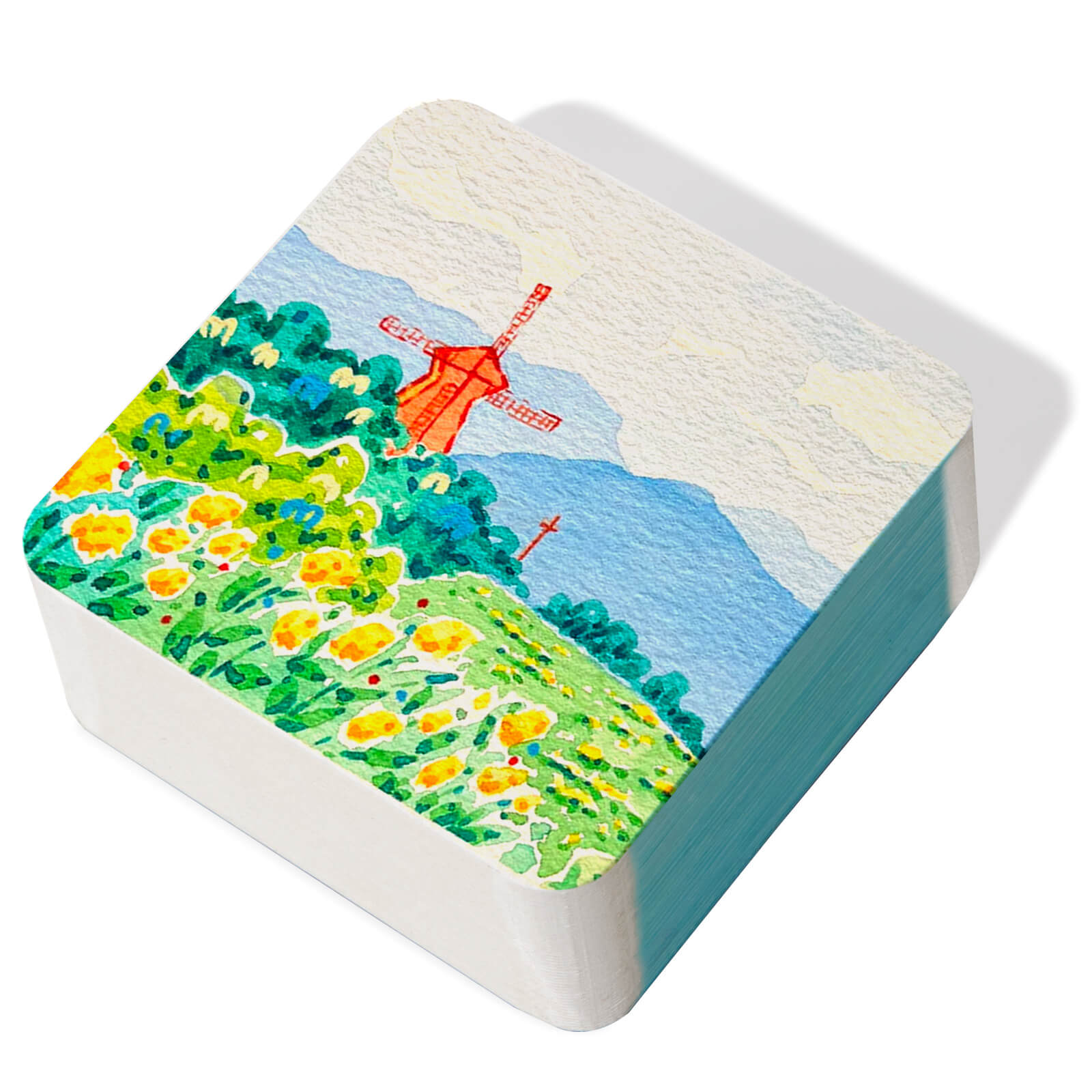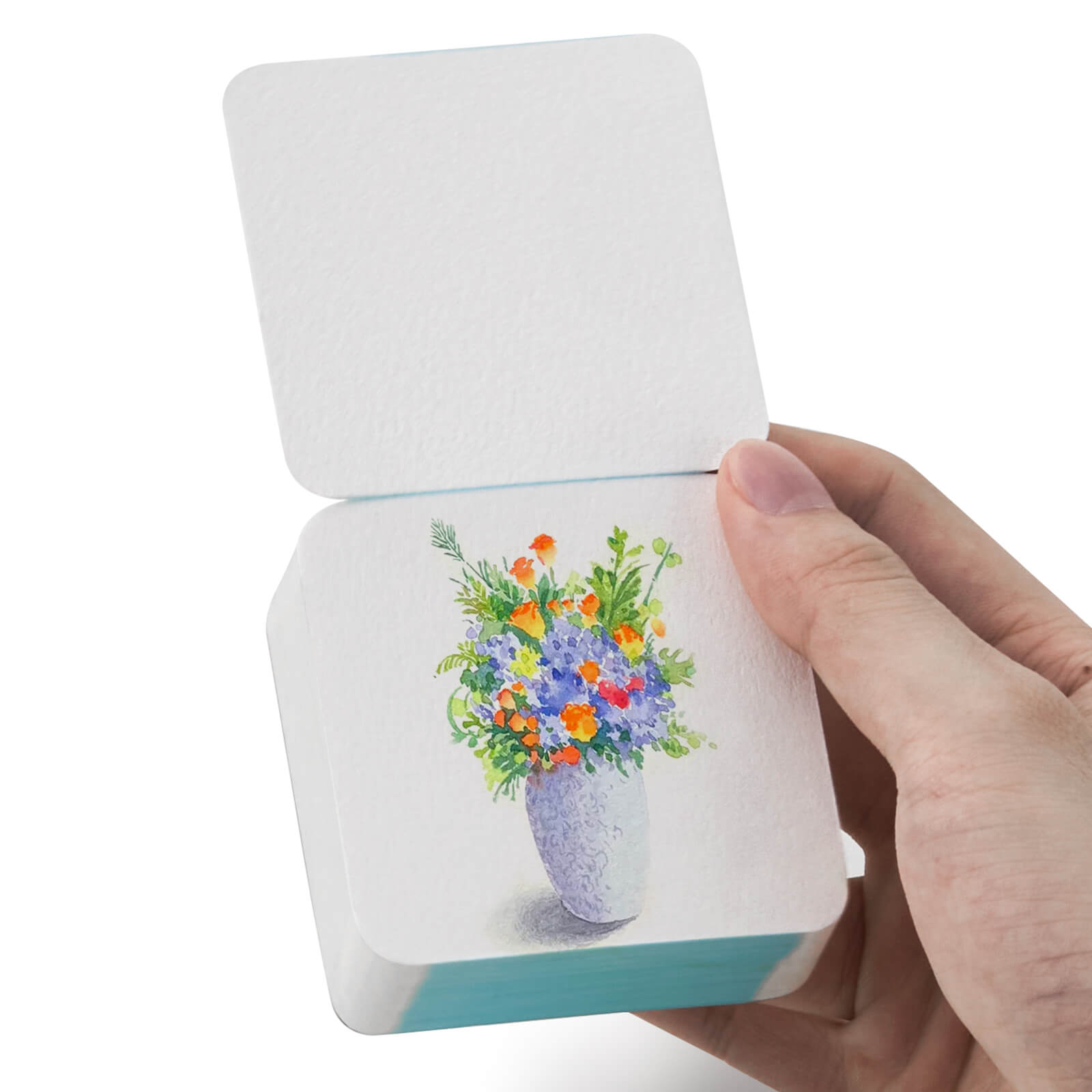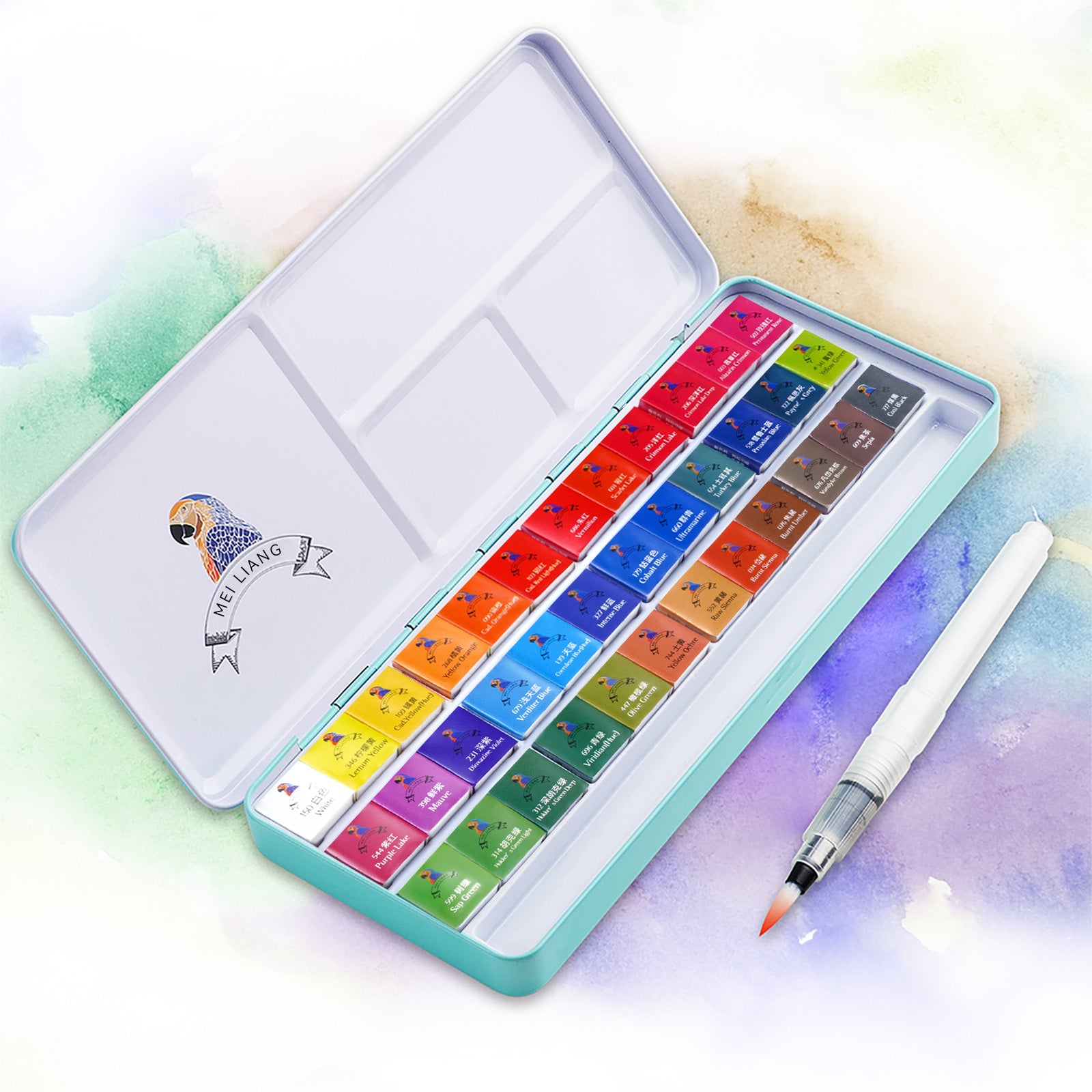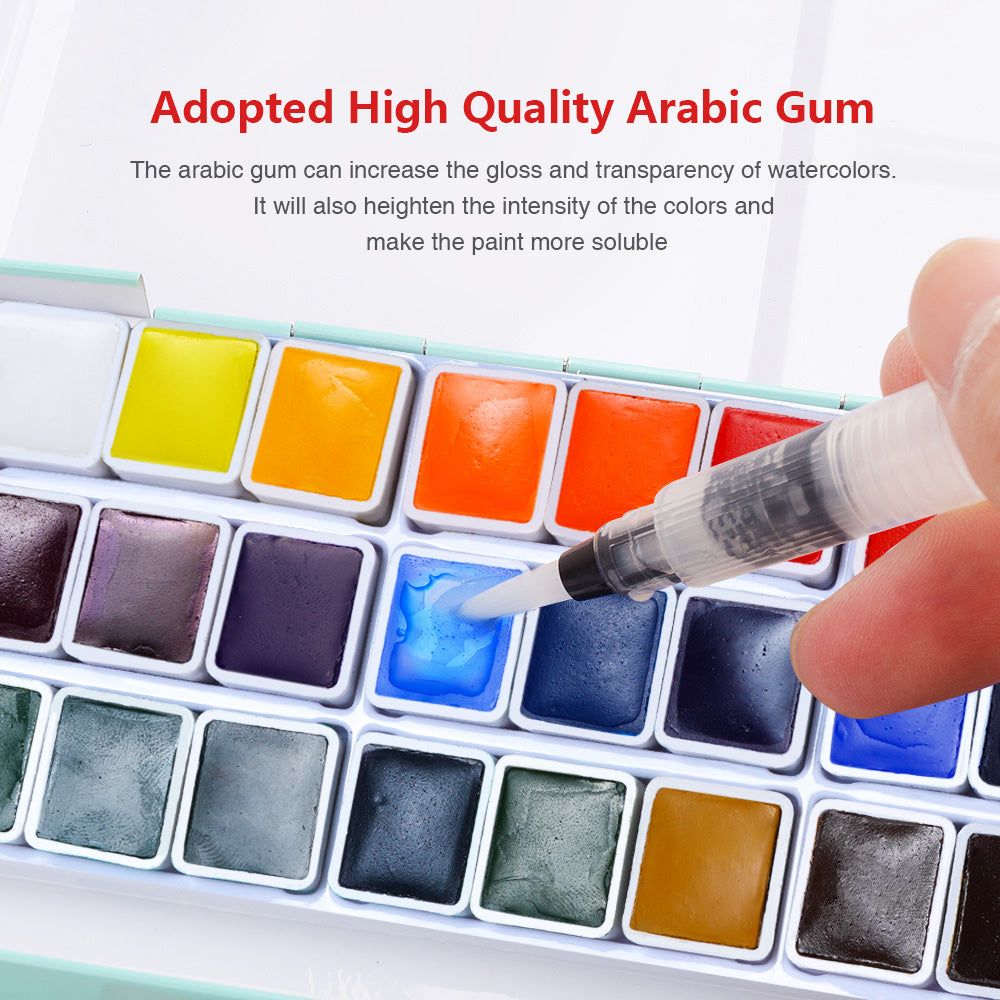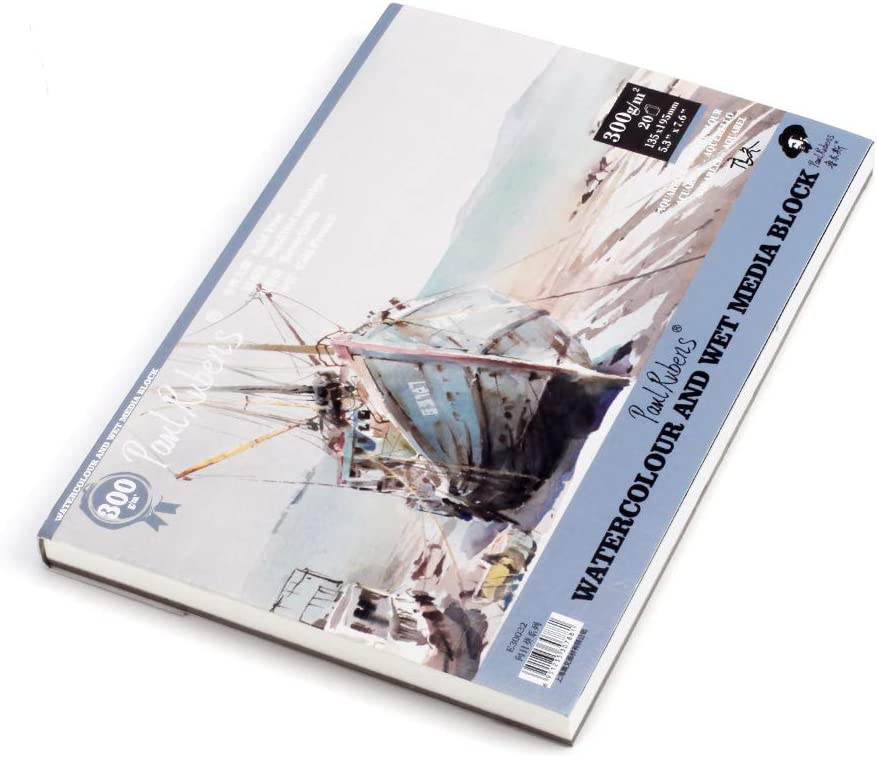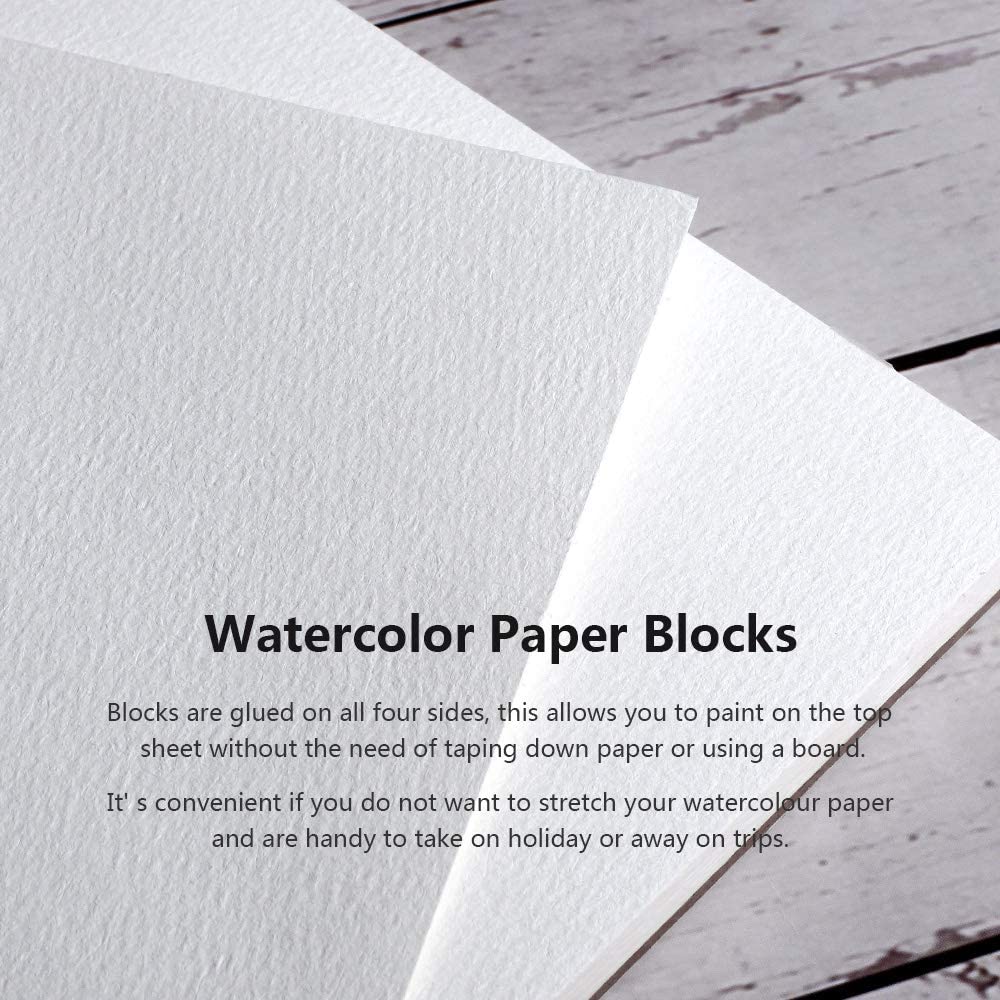Standen Sie schon einmal vor einer leeren Leinwand und waren angesichts der schieren Vielfalt an künstlerischen Möglichkeiten wie gelähmt? Farben, Farben überall – aber welche sollten Sie wählen? Aquarell und Acryl: Beides sind lebendige, spannende Medien, die aber sehr unterschiedliche Stile und Fähigkeiten erfordern. Stellen Sie es sich so vor: Aquarell ist wie ein schüchternes Flüstern, zart und transparent, während Acryl ein lautes Geschrei ist, deckend und zu allem bereit. Es geht nicht nur um Farbe; es geht um Technik, Textur und die gewünschte Gesamtwirkung . Lassen Sie uns also die Geheimnisse lüften und uns den wesentlichen Unterschieden zwischen diesen beiden Titanen der Kunstwelt widmen. Mal ehrlich, was ist überhaupt der Unterschied zwischen Aquarell- und Acrylfarbe ?! Wir werden es gleich herausfinden.
1. Die Grundlagen verstehen: Aquarell entmystifiziert
Aquarell, dieses ätherische, fließende Medium, fasziniert Künstler seit Jahrhunderten. Aber was genau macht es so besonders?
Transparenz ist der Schlüssel
Das charakteristische Merkmal von Aquarell ist ihre Transparenz. Es handelt sich nicht um eine durchschnittliche deckende Deckkraft; man sieht durch die Schichten hindurch. Dadurch entsteht ein leuchtender Effekt, bei dem das Licht vom Papier reflektiert wird und durch die Farbe hindurchscheint. Es ist wie Malen mit Buntglas!
- Pigment und Bindemittel: Aquarellfarbe besteht aus feinen Pigmentpartikeln, die in einem wasserlöslichen Bindemittel, normalerweise Gummi arabicum, suspendiert sind.
- Anwendung: Du verdünnst die Farbe mit Wasser und steuerst so die Farbintensität. Mehr Wasser, hellere Farbe; weniger Wasser, kräftigere Farbe. Auf das richtige Wasser-Farb-Verhältnis kommt es an!
- Papier ist wichtig: Aquarellpapier ist speziell dafür entwickelt, Wasser aufzunehmen und ein Verziehen zu verhindern. Achten Sie auf Papier mit der Aufschrift „Aquarell“ und achten Sie auf das Gewicht (g/m²) – schwereres Papier ist besser.
- Abheben und Schichten: Sie können Farbe abheben, indem Sie sie mit einem sauberen, feuchten Pinsel oder Schwamm abtupfen. Das Schichten von Farben, auch Lasieren genannt, erzeugt Tiefe und Komplexität. Aber seien Sie vorsichtig, nicht zu übertreiben, sonst entsteht ein schlammiges Durcheinander!

Aquarelltechniken: Ein sanfter Tanz
Bei Aquarelltechniken geht es darum, die Fließfähigkeit und Unberechenbarkeit des Mediums zu nutzen.
- Nass-in-Nass: Farbe wird auf nasses Papier aufgetragen, wodurch weiche, diffuse Kanten entstehen. Denken Sie an verträumte Landschaften und dunstige Himmel.
- Nass-auf-Trocken: Farbe wird auf trockenes Papier aufgetragen, wodurch scharfe, definierte Kanten entstehen. Perfekt für detaillierte Arbeiten und präzise Linien.
- Trockenpinsel: Mit einem trockenen Pinsel und einer kleinen Menge Farbe lassen sich Struktureffekte erzeugen. Ideal für die Darstellung von Gras, Fell oder rauen Oberflächen.
- Graded Wash: Erzeugt einen sanften Übergang von Hell zu Dunkel. Unverzichtbar für die Malerei von Himmeln und anderen allmählichen Farbübergängen.
Vor- und Nachteile von Aquarell: Das Gute, das Schlechte und das Verwaschene
Vorteile:
- Leuchtend und transparent: Erzeugt wunderschöne, ätherische Effekte.
- Tragbar und praktisch: Einfach zu transportieren und aufzustellen, daher ideal für die Plein-Air-Malerei (Malen im Freien).
- Einfache Reinigung: Reinigen Sie Ihre Pinsel einfach mit Wasser.
- Nachsichtig (bis zu einem gewissen Grad): Sie können Farbe abheben und Fehler korrigieren, aber nur bis zu einem gewissen Grad.
Nachteile:
- Kann unvorhersehbar sein: Schwer zu kontrollieren, insbesondere für Anfänger.
- Nicht sehr deckend: Es ist schwierig, feste, deckende Farbbereiche zu erzeugen.
- Papierwölbung: Kann dazu führen, dass sich Papier wölbt, wenn zu viel Wasser verwendet wird.
- Nicht so haltbar: Wasserfarben sind anfällig für Verblassen und Feuchtigkeitsschäden.
2. Acrylic Adventures: Mutig und unaufhaltsam
Lassen Sie uns nun das Thema wechseln und in die Welt der Acrylfarben eintauchen. Sie sind die Arbeitspferde der Malerei, bekannt für ihre Vielseitigkeit, Haltbarkeit und leuchtenden Farben.
Opazitäts- und Vielseitigkeitsregel
Im Gegensatz zu Aquarellfarben sind Acrylfarben deckend. Das bedeutet, dass sie die darunterliegende Oberfläche vollständig bedecken, sodass Sie mehrere Farb- und Strukturschichten auftragen können.
- Pigment- und Polymeremulsion: Acrylfarben bestehen aus Pigmentpartikeln, die in einer Acrylpolymeremulsion suspendiert sind. Diese Emulsion dient als Bindemittel, hält das Pigment zusammen und ermöglicht der Farbe, auf verschiedenen Oberflächen zu haften.
- Schnelle Trocknungszeit: Acrylfarben trocknen schnell, was Segen und Fluch zugleich sein kann. So können Sie zwar schnell Schichten auftragen, müssen aber auch schnell arbeiten und verhindern, dass die Farbe auf Ihrer Palette oder Ihren Pinseln trocknet.
- Oberflächenkompatibilität: Acrylfarben können auf einer Vielzahl von Oberflächen verwendet werden, darunter Leinwand, Holz, Papier, Stoff und sogar Metall.
- Auf Wasserbasis (im nassen Zustand): Acrylfarben trocknen zwar zu einem wasserfesten, dauerhaften Finish, sind aber im nassen Zustand auf Wasserbasis, was die Reinigung relativ einfach macht.

Acryltechniken: Von Impasto bis Lasieren
Acrylfarben bieten eine große Auswahl an Techniken, die nur durch Ihre Vorstellungskraft begrenzt sind.
- Impasto: Dicke Farbschichten werden aufgetragen, um Struktureffekte zu erzeugen. Denken Sie an Van Goghs wirbelnde Pinselstriche.
- Lasieren: Auftragen dünner, transparenter Farbschichten auf eine trockene Untermalung, um Tiefe und Leuchtkraft zu erzeugen.
- Trockenbürsten: Ähnlich wie beim Aquarellieren werden mit einem trockenen Pinsel und einer kleinen Menge Farbe Struktureffekte erzeugt.
- Gießen: Gießen verdünnter Acrylfarbe auf eine Oberfläche, um abstrakte Effekte zu erzeugen.
- Gemischte Medien: Kombinieren von Acrylfarben mit anderen Materialien wie Collagen, Textilien oder gefundenen Objekten.
Vor- und Nachteile von Acryl: Das Gute, das Schlechte und das Mutige
Vorteile:
- Deckend und vielseitig: Kann zum Erzeugen einer großen Bandbreite an Effekten verwendet werden, von glatten, flachen Oberflächen bis hin zu strukturiertem Impasto.
- Langlebig und wasserfest: Trocknet zu einem dauerhaften, wasserfesten Finish.
- Schnelle Trocknungszeit: Ermöglicht Ihnen, schnell Schichten aufzutragen.
- Große Auswahl an Oberflächen: Kann auf einer Vielzahl von Oberflächen verwendet werden.
Nachteile:
- Schnelle Trocknungszeit: Kann das Verblenden erschweren.
- Schwer zu reinigen: Nach dem Trocknen lässt sich Acrylfarbe nur schwer von Pinseln und Oberflächen entfernen.
- Kann plastisch aussehen: Bei unsachgemäßer Verwendung können Acrylfarben ein plastisch ähnliches Aussehen annehmen.
- Weniger nachsichtig: Fehler sind schwieriger zu korrigieren als bei Wasserfarben.
3. Deep Dive: Aquarell vs. Acryl – Die wichtigsten Unterschiede hervorgehoben
Okay, kommen wir zur Sache. Die Grundlagen haben wir besprochen, aber was ist der Unterschied zwischen Aquarell- und Acrylfarbe im Detail? Hier ist eine praktische Vergleichstabelle:
| Besonderheit | Aquarell | Acryl |
|---|---|---|
| Opazität | Transparent | Undurchsichtig |
| Trocknungszeit | Langsamer | Schneller |
| Wasserbeständigkeit | Nicht wasserfest (wird mit Wasser reaktiviert) | Wasserfest (nach dem Trocknen) |
| Vielseitigkeit | Weniger vielseitig | Vielseitiger |
| Oberfläche | Hauptsächlich Aquarellpapier | Leinwand, Papier, Holz, Stoff usw. |
| Textur | Typisch glatt | Kann glatt oder stark strukturiert sein |
| Korrekturen | Leichter zu korrigieren (bis zu einem gewissen Grad) | Schwieriger zu korrigieren |
| Bereinigung | Einfacher (nur Wasser) | Schwieriger (erfordert Lösungsmittel oder Seifenwasser vor dem Trocknen) |
| Am besten für | Landschaften, Illustrationen, Soft-Effekte | Mutige Gemälde, gemischte Medien, vielseitige Projekte |
| Haltbarkeit | Weniger langlebig | Langlebiger |
4. Die Wahl treffen: Welche Farbe ist die richtige für Sie?
Wie entscheiden Sie, welche Farbe die richtige für Sie ist? Berücksichtigen Sie dabei folgende Faktoren:
- Ihr Kenntnisstand: Aquarellmalerei kann aufgrund ihrer Unberechenbarkeit für Anfänger eine Herausforderung darstellen. Acrylmalerei bietet mehr Kontrolle und ist im Allgemeinen einfacher zu verarbeiten.
- Ihr Stil: Wenn Sie zarte, leuchtende Effekte bevorzugen, ist Aquarell die richtige Wahl. Wenn Sie kräftige, leuchtende Farben und strukturierte Oberflächen bevorzugen, sind Acrylfarben die bessere Wahl.
- Ihr Projekt: Überlegen Sie, auf welchen Untergrund Sie malen und welches Ergebnis Sie erzielen möchten. Wenn Sie beispielsweise ein Wandbild malen, sind Acrylfarben die naheliegendste Wahl. Für eine kleine, filigrane Illustration eignet sich Aquarell möglicherweise besser.
- Ihr Budget: Aquarellfarben sind im Allgemeinen günstiger als Acrylfarben, Sie müssen jedoch auch die Kosten für Papier und Pinsel berücksichtigen.
- Die Stimmung, die Sie anstreben: Ehrlich gesagt, manchmal ist es einfach nur ein Bauchgefühl! Möchten Sie Ihren inneren Monet mit Aquarellen kanalisieren oder Ihren inneren Picasso mit Acrylfarben entfesseln?

5. FAQs: Häufig gestellte Fragen zu Aquarell- und Acrylfarben
(1) Kann man Aquarell- und Acrylfarben mischen?
Technisch gesehen ist das möglich , aber es wird im Allgemeinen nicht empfohlen. Die unterschiedlichen Eigenschaften der Farben können zu unvorhersehbaren Ergebnissen führen. Es ist besser, sich an das eine oder andere Medium zu halten.
(2) Muss ich meine Leinwand grundieren, bevor ich mit Acrylfarben male?
Ja, das Grundieren Ihrer Leinwand mit Gesso ist wichtig, um eine glatte, gleichmäßige Oberfläche zu schaffen und zu verhindern, dass die Farbe in die Leinwand eindringt.
(3) Wie verhindere ich, dass sich mein Aquarellpapier wellt?
Verwenden Sie schweres Aquarellpapier (mindestens 63 kg) und spannen Sie es vor dem Malen. Sie können das Papier spannen, indem Sie es auf eine Platte kleben oder einen Aquarell-Keilrahmen verwenden.
(4) Wie reinige ich meine Pinsel nach der Verwendung von Acrylfarbe?
Reinigen Sie Ihre Pinsel sofort nach Gebrauch mit Seifenlauge. Ist die Farbe eingetrocknet, benötigen Sie ggf. einen speziellen Pinselreiniger.
(5) Sind Acrylfarben giftig?
Die meisten Acrylfarben sind ungiftig, dennoch ist es ratsam, das Etikett zu überprüfen. Sorgen Sie beim Malen für ausreichende Belüftung und vermeiden Sie das Verschlucken der Farbe.
(6) Kann ich Acrylfarbe auf Stoff verwenden?
Ja, Sie können Acrylfarbe auf Stoff verwenden, Sie müssen jedoch ein Stoffmedium verwenden, um zu verhindern, dass die Farbe reißt oder abblättert.
Abschluss
Letztendlich ist die Entscheidung zwischen Aquarell- und Acrylfarbe eine persönliche. Es gibt kein Richtig oder Falsch. Experimentiere mit beiden Medien, probiere verschiedene Techniken aus und finde heraus, was am besten zu dir passt. Also los, schnapp dir deine Pinsel und entfessele deinen inneren Künstler! Ob du dich für den zarten Tanz der Aquarellmalerei oder die kräftigen Pinselstriche der Acrylmalerei entscheidest, das Wichtigste ist, Spaß zu haben und dich auszudrücken. Jetzt kennst du den Unterschied zwischen Aquarell- und Acrylfarbe und kannst eine fundierte Entscheidung treffen. Viel Spaß beim Malen!

